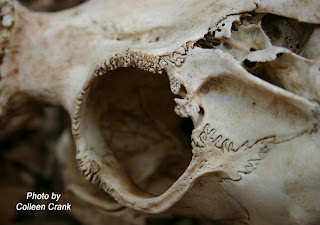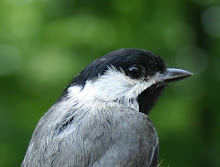
This month's book was Mercy by Toni Morrison. The story takes place in 1690, when slavery was still fairly new to America. Florens, the main character, is the child of a slave and is offered as payment to a debt. Jacob is the man who takes Florens as payment to his small, struggling farm that is primarily populated by women. (Jacob does not like having too many men on the farm while he is away) The women on the farm are Rebekkah, Jacob's wife, Lina and Sorrow are the female slaves. The other 3 men characters in the story that play small, but important parts are the Blacksmith, Will and Scully.
Each chapter is told from a different perspective and the reader learns the character's present situation and thoughts are often affected by their past.
Spoilers below.
From my personal perspective, I thought the prose in this book was beautiful and the story spoke to me. The first thing that struck me was the theme of hardship that we impose on others: slavery, class, religion, women's rights. For example, in the beginning of the book, D'Ortega is the cash strapped farmer who is eager to pay his debt to Jacob with another human being. D'Ortega looks at his slaves as commodities instead of people.
Rebekkah parents treated her in much the same way, especially when she came to be of marriage age and there were few prospects in England. Her father searched for a prospective husband and found Jacob's request in a newspaper (Jacob lived in America). It was obvious her father was indifferent to her daughter having a better life than he. He just wanted her out of the house because it would be one less mouth to feed. ...Rebekkah's mother objected to the "sale" - she called it that because the prospective groom had stressed "reimbursement" for clothing, expenses and a few supplies - not for the love or need of her daughter, but because the husband to be was a heathen living among savages. And when Rebekkah made the move to America and married Jacob, she never heard from her family again.
Sorrow was a bit older than Florens but had a great deal of hardship in her young life, beginning with her surviving a mass murder on the ship she grew up on. She developed a mechanism to cope with this severe trauma but as a result she was perceived as odd. Instead of being treated with patience and compassion, she was feared and treated as an outcast by the women she lived with on the farm.
Lina was a central character in the book, but somehow it seemed there was too little light shed on this character. She was a member of a tribe that was overcome by illness and when Presbyterians took her in, preaching religion as the "right way" of life, she lost her freedom to slavery. She often inflicted hardship on others, especially Sorrow.
Perhaps the person most affected by hardship was Florens, beginning with her mother offering Florens as payment for D'Ortega's debt. Florens was subjected to the careless way the Blacksmith took her heart and left her behind and this was the beginning of the end for this young woman. Lina, the matriach of the slave family, opposed Floren's attachment to the Blacksmith that waltzed in as a free black man to build an iron gate for Jacob's new estate. She knew this man would break Florens' heart, possibly even her soul.
Florens had been a quiet, timid version of herself at the time of displacement. Before destruction. Before sin. Before man...Lina saw the flaw in Florens' unabiding devotion to the blacksmith and Florens was blind to it. "You are a leaf on his tree" "No," said Florens "I am his tree."
When Rebekkah fell ill she asked for the Blacksmith's aid (he had some medical knowledge) and Florens eagerly volunteered to go find him under the illusion of a happy reunion would be had. The sad transformation began on this journey. When Florens stayed with a widow and her young child she was subjected to the harsh racial and religious prejudice of a visiting pastor and his family. They forced her to take off her clothes to make sure she was not a demon.
...eyes that examine me for a tail, an extra teat, a man's whip between my legs...they want to see if my tongue is split like a snake, or if my teeth or filing to points to chew them up.
Florens makes her escape from the house, but the experience just short of shattered her.
Inside I am shrinking. I climb the stream bed under watching trees and know I am not the same. I am losing something with every step I take. I can feel the drain. Something precious is leaving me. I am a thing apart...inside dark is small, feathered and toothy...
And when Florens arrives at the Blacksmith's doorstep, she is disheartened to see he has a young child and there is not the joyous, passionate reunion she was expecting. He leaves the child in Florens care while he tends to Rebekkah and the young woman barely tolerates the boy's presence, seeing him as competition for the Blacksmith's attention. She ends up nearly beating the boy and then the Blacksmith, when he interrupts the physical violence. She is hurt and doesn't understand when he calls her a slave with no mind or sense of self. She is enraged and her fury takes on a life of its own.
At the end of the book, Florens allowed this recent run of hardships to wreck her life, making her mother's sacrifice for naught. And here is where the mercy and hardship intermingle. The mother did not surrender Florens because she no longer wanted her child, as Florens believed, but because the mother wanted Florens to have a better life. The sacrifice was a hardship both on mother and daughter but for different reasons and only the mother knew the true reason for the sacrifice.






